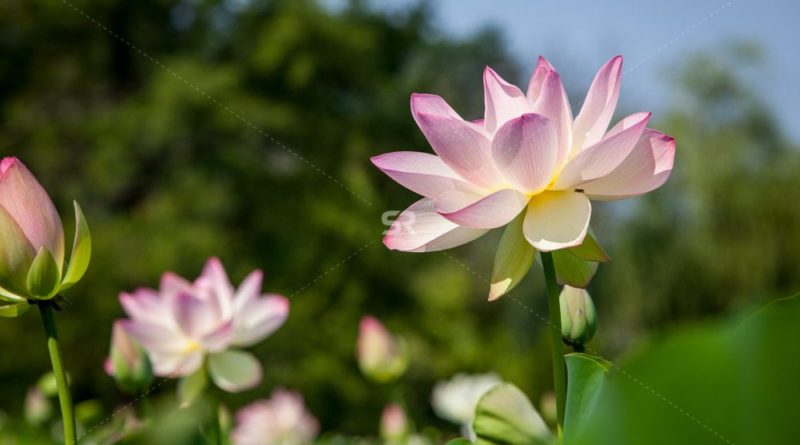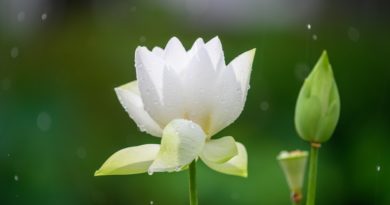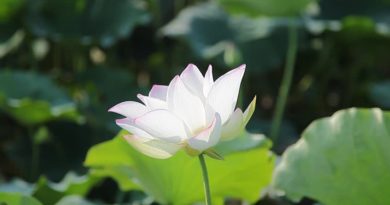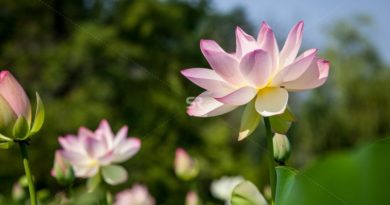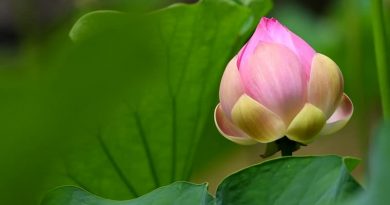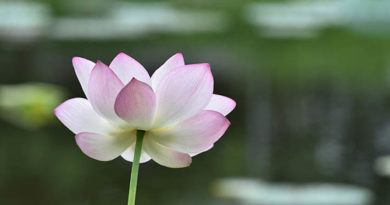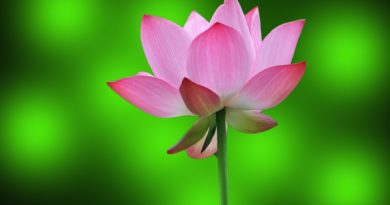ABHIDHAMMA IN DAILY LIFE – CHAPTER 20: PLANES OF EXISTENCE
ABHIDHAMMA IN DAILY LIFE – CHAPTER 20: PLANES OF EXISTENCE
We are born, we die and then we are born again. It is beyond control in which plane of existence we will be reborn; it depends on the kamma which produces the patisandhi-citta (rebirth-consciousness) after the cuti-citta (dying-consciousness) has fallen away.
At this moment we are living in the human plane. Human life, however, is very short. When this life is over we do not know in which plane we will be reborn. Most people do not like to think of the shortness of human life; they are absorbed in what they experience through the sense-doors and on account of these experiences they are happy or unhappy. However, we should realize that happiness and unhappiness are only mental phenomena which arise because of conditions and fall away again. Our whole life is a sequence of phenomena which arise and fall away again.
Many religions teach about heaven and hell. In what respect are the Buddhist teachings different? Do we just have to believe in heaven and hell? Through the Buddhist teachings we learn to study realities, to study cause and effect in life. Each cause brings about its appropriate result. People perform good and bad deeds and these deeds bring different results; they can cause births in different planes of existence. The plane of existence is the place where one is born. Birth in a woeful plane is the result of a bad deed and birth in a happy plane is the result of a good deed. Since the deeds of beings are of many different degrees of kusala and akusala, the results are of many different degrees as well. There are different woeful planes and different happy planes of existence.
The animal world is a woeful plane. We can see how animals devour one another and we find that nature is cruel. The animal world is not the only woeful plane. There are different hell planes. The akusala vipaka in hell is more intense than the sufferings which can be experienced in the human plane. The descriptions of hells in the Buddhist teachings are not merely allegories; the experience of unpleasant things through eyes, ears, nose, tongue and body-sense is akusala vipaka and akusala vipaka is reality. Life in a hell plane is not permanent ; when one’s lifespan in a hell plane is over there can be rebirth in another plane.
Apart from the animal plane and the hell planes, there are other woeful planes. Birth in the plane of petas (ghosts) is the result of akusala kamma, conditioned by lobha. Beings in that plane have a deformed figure and they are always hungry and thirsty.
Furthermore, there is the plane of asuras (demons). The objects which are experienced in the asura plane are not as enjoyable as the objects which can be experienced in the human plane. There are four classes of woeful planes in all.
Birth as a human being is a happy rebirth. In the human plane there is opportunity for the cultivation of kusala. One can study Dhamma and learn to develop the way leading to the end of defilements and the end of birth and death. Birth in the human plane is kusala vipaka, but during one’s lifespan in this plane there are both kusala vipaka and akusala vipaka. Each person experiences different results in life: there is gain and loss, honour and dishonour, praise and blame, happiness and misery. Each person is born into the family which is the right condition for him to experience the results of his deeds. It is due to one’s kamma that one experiences pleasant and unpleasant things through eyes, ears, nose, tongue and body-sense.
Other happy planes, apart from the human plane, are the heavenly planes. In the heavenly planes there is more kusala vipaka than in the human plane and less akusala vipaka. There are several heavenly planes and although life in a heavenly plane lasts a very long time, it is not permanent. The woeful planes, the human plane and the six heavenly planes which are ‘deva planes’, are sensuous planes of existence. Sensuous planes of existence are planes where there is seeing, hearing, smelling, tasting, the experience of bodily impressions and other kamavacara cittas (cittas which are of the sensuous plane of consciousness). There are eleven classes of sensuous planes of existence in all.
Those who see the disadvantages of sense-impressions may cultivate jhana ; they can be reborn in higher heavenly planes which are not sensuous planes. Those who attain rupa-jhana can be reborn in rupa-brahma planes where there are less sense-impressions. There are sixteen rupa-brahma planes in all. One of them is the asanna-satta plane where there is only rupa, not nama. Those who have attained the highest stage of rupa- jhana and who wish to have no consciousness at all, can be reborn without citta; for them there is only a body. These beings have seen the disadvantages of consciousness; even happiness is a disadvantage, since it does not last.
Those who see the disadvantages of rupa cultivate arupa-jhana. Those who attain arupa-jhana can be reborn in arupa-brahma planes where there are no rupas. There are four arupa-brahma planes. Beings born in these planes have only nama, not rupa. People may wonder how there can be beings which only have rupa or beings which only have nama. If we can experience different characteristics of nama-elements and rupa- elements as they appear one at a time and if we have realized that they are only elements which arise because of conditions, not a being or a person, not self, we will have no doubt that, when there are the appropriate conditions, there can be rupa without nama and nama without rupa.
There are thirty-one planes of existence in all, namely:
4 woeful planes
the human plane } 11 sensuous planes
6 deva planes
16 rupa-brahma planes
4 arupa-brahma planes
As we have seen, the fact that beings are born in different planes of existence is due to their accumulated kamma. Plane of existence is the place where one is born. It is not plane of citta. What plane of citta a citta belongs to, depends on the object (arammana) the citta experiences. We learnt about different planes of citta, namely:
kamavacara cittas (sensuous plane of citta or kama-bhumi)
rupavacara cittas (plane of rupa-jhanacittas)
arupavacara cittas (plane of arupa-jhanacittas)
lokuttara cittas (plane of cittas experiencing nibbana)
As regards the kamacara cittas, they can be classified as asobhana cittas (cittas not accompanied by sobhana cetasikas) and kama-sobhana cittas (cittas of the sensuous plane of citta, accompanied by sobhana cetasikas). In which planes of existence do they arise?
Kamavacara citta arise in thirty planes of existence, they do not arise in the asanna-satta plane, where there is no nama, only rupa. Even in the arupa-brahma planes there are kamavacara cittas.
As regards kama-sobhana cittas, they can arise even in woeful planes. Furthermore, they arise in the human plane, in the heavenly planes, in the rupa-brahma planes and in the arupa-brahma planes. They arise in thirty planes of existence, the asanna-satta plane excepted. Not all types however, arise in all planes of existence.
Asobhana cittas can arise in thirty planes of existence, but not all types arise in all planes. Lobha-mula-cittas (cittas rooted in attachment) can arise in thirty planes; even in the rupa-brahma planes and in the arupa- brahma planes, lobha-mula-cittas can arise. Dosa-mula-cittas (cittas rooted in aversion) arise in the eleven sensuous planes of existence. They do not arise in the rupa-brahma planes or in the arupa-brahma planes. As long as beings live in the rupa-brahma planes and in the arupa-brahma planes there are no conditions for dosa. Moha-mula-cittas (cittas rooted in ignorance) arise in thirty planes of existence ; all those who are not arahats have moha and thus moha-mula-cittas arise in all planes of existence except in the asanna-satta plane.
As we have seen, not only akusala cittas, but also ahetuka cittas are asobhana cittas (cittas which are not accompanied by sobhana cetasikas). As regards the asobhana cittas which are ahetuka, the ahetuka cittas which arise in a process of cittas experiencing an object through one of the sense-doors, can arise only in the planes where there are sense-impressions. Seeing-consciousness and hearing-consciousness arise in the eleven sensuous planes of existence (the four woeful planes, the human being plane and the six heavenly planes which are sensuous planes: the deva planes) and they arise also in fifteen rupa-brahma planes, thus they arise in twenty-six planes of existence.
Smelling-consciousness, tasting-consciousness and body-consciousness arise only in the eleven sensuous planes. Thus, they do not arise in the rupa-brahma planes or in the arupa-brahma planes.
Panca-dvaravajjana-citta (five-sense-door-adverting-consciousness), sampaticchana-citta (receiving- consciousness) and santirana-citta (investigating-consciousness) arise in all planes where there are sense- impressions, thus they arise in twenty-six planes (in the eleven sensuous planes and in fifteen rupa- brahma planes; the rupa-brahma plane which is the asanna-satta plane is excepted).
The mano-dvaravajjana-citta (mind-door-adverting-consciousness) arises in all planes where there is nama, thus it arises in thirty planes.
People are inclined to speculate about the place where they will be reborn. Would we like to be reborn in the human plane? We cling to life in the human plane and we do not always realize the many moments of akusala vipaka we are bound to receive in this world: we are threatened by calamities such as war and hunger, there is sickness, old age and death. Some people would like to be reborn in a heavenly plane; they like to experience pleasant things through the senses. One may wish for rebirth in a heavenly plane, but whether or not this will happen depend on one’s kamma. Birth is result, it does not take place without cause. If one performs many good deeds one cultivates the cause which will bring a pleasant result; but there is no way to know when the result will take place, this is beyond control.
Are we afraid of death? Most people want to prolong their lives. They fear death because they feel uncertain of the future. If one is not an ariyan there may be rebirth in hell. We do not like to think of rebirth in a woeful plane, but there may be deeds performed in the past which can still cause rebirth in hell. Even the Buddha was in one of his former lives born in hell. It is useless to think of hell with aversion and fear, but the thought of hell is helpful when it reminds us to cultivate kusala at this moment, instead of akusala.
We read in the ‘Kindred Sayings’ (V, Maha-vagga, Kindred Sayings on Stream-Winning, Ch.VI, par. 4, Visiting the sick) that the Buddha spoke to Mahanama about the way a wise lay-follower who is sick should be admonished by another wise lay-follower. We read:
A wise lay-disciple, Mahanama, who is sick… should be admonished by another wise lay-disciple with the four comfortable assurances, thus: ‘Take comfort, dear sir, in your unwavering loyalty to the Buddha, to the Dhamma, to the Sangha…Take comfort, dear sir, in your possession of the virtues dear to the Ariyans…’ A wise lay-disciple, Mahanama, who is sick… should be admonished by another wise lay-disciple with these four comfortable assurances.
Then, supposing he has longing for his parents, he should thus be spoken to:
If he say: ‘I have longing for my parents’, the other should reply: ‘But, my dear sir, your are subject to death. Whether you feel longing for your parents or not, you will have to die. It were just as well for you to abandon the longing you have for your parents.’
If he should say: ‘That longing for my parents is now abandoned,’ the other should reply: ‘Yet, my dear sir, you still have longing for your children. As you must die in any case, it were just as well for you to abandon that longing for your children.’
If he should say: ‘That longing for my children is now abandoned,’ the other should reply: ‘Yet, my dear sir, you still have longing for the five human pleasures of sense.’
Then, if he say, ‘That longing for the five human pleasures of sense is now abandoned,’ the other should reply: ‘My friend, the heavenly delights are more excellent than the five human pleasures of sense. It were well for you, worthy sir, to remove your thoughts from them and fix them on the Four Deva Kings.’
Suppose the sick man say, ‘My thoughts are removed from human pleasures of sense and fixed upon the Four Deva Kings,’ then let the other say: ‘More excellent than the Four Deva Kings and more choice are the Suite of the Thirty-three… the Creative Devas… the Devas who rejoice in the work of other devas… the latter are more excellent and choice than the former… so it were better for you to fix your thoughts on the Brahma World.’
Then if the sick man’s thoughts are so fixed, let the other say: ‘My friend, even the Brahma World is impermanent, not lasting, prisoned in a person. Well for you, friend, if you raise your mind above the Brahma World and fix it on cessation from the person-pack. (The five khandhas of clinging.)’
And if the sick man says he has done so, then, Mahanama, I declare that there is no difference between the lay-disciple who thus avers and the monk whose heart is freed from the asavas, that is, between the release of the one and the release of the other.
It is a danger to be subject to birth. No rebirth at all in any plane of existence is to be preferred to birth even in the highest heavenly plane. If one wants to have no more rebirth one should know the Four Ariyan Truths; realizing these leads to the end of rebirth.
The First Ariyan Truth is the truth of dukkha. If we could experience, for instance, that seeing at this moment, hearing, attachment or any other nama or rupa which appears now is only an element which arises and falls away, we would have more understanding of the truth of dukkha. What arises and falls away cannot give satisfaction, it is dukkha. The Second Ariyan Truth is the truth of the origin of dukkha. Craving is the origin of dukkha. Through the development of the Eightfold Path there will be less craving, less clinging to nama and rupa. When finally there is no more craving, there will be an end to rebirth, which is the end of dukkha. The Third Ariyan Truth is the extinction of dukkha, which is nibbana, and the Fourth Ariyan Truth is the Path leading to the extinction of dukkha, which is the Eightfold Path.
We read in the ‘Maha-parinibbana-sutta’ (Dialogues of the Buddha II, No. 16, Ch.II, 1, 2):
The Exalted One proceeded with a great company of the monks to Kotigama; and there he stayed in the village itself.
And at that place the Exalted One addressed the monks, and said: ‘It is through not understanding and grasping Four Ariyan Truths, O monks, that we have had to run so long, to wander so long in this weary path of rebirth, both you and I!’
‘And what are these four?’
‘The Ariyan truth about dukkha; the Ariyan truth about the cause of dukkha; the Ariyan truth about the cessation of dukkha; and the Ariyan truth about the path that leads to that cessation. But when these Ariyan truths are grasped and known the craving for future life is rooted out, that which leads to renewed becoming is destroyed, and then there is no more birth!’
-ooOoo-
Questions
- Why do the Buddha’s teachings speak about hell? What is the aim of this?
2. What is a plane of existence?
3. What is the difference between ‘plane of citta’ and ‘plane of existence’ ?
4. On what does it depend what plane of consciousness a citta belongs to?
5. The human plane is a sensuous plane of existence. Are there in the human plane only cittas which are kamavacara cittas (cittas of the sensuous plane of consciousness) ?
6. The rupa-brahma planes are not sensuous planes of existence. Can there be kamavacara cittas in the rupa-brahma planes? If so, all types ?

